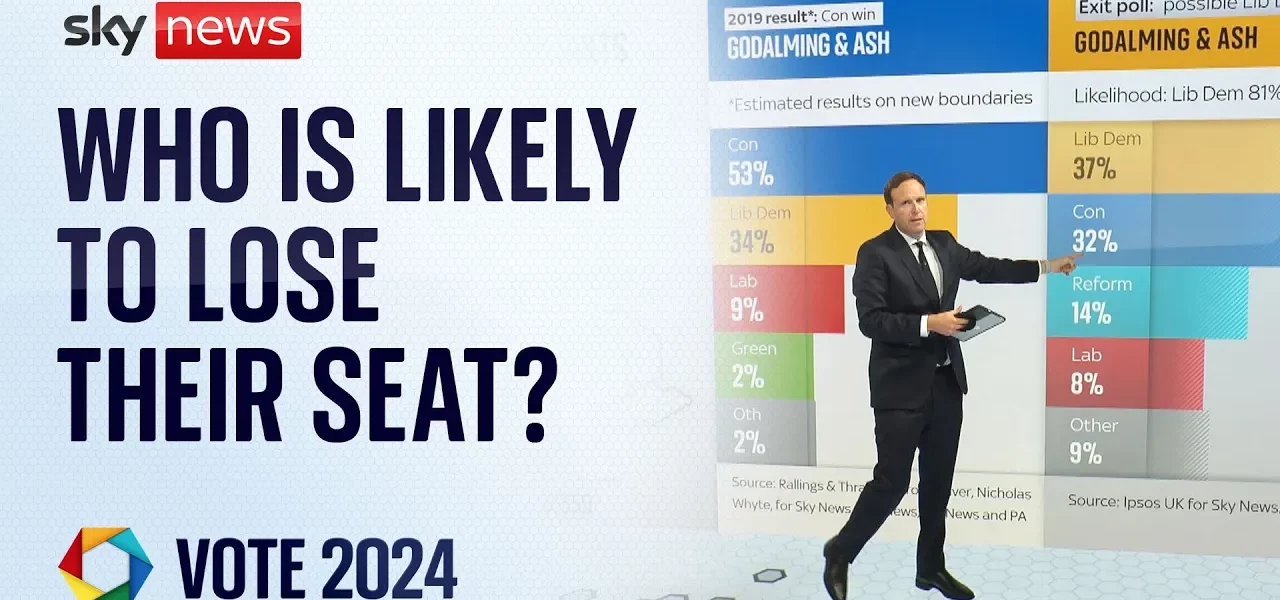In-Depth Analysis of Exit Polls and Their Implications

This article provides a comprehensive analysis of the latest exit polls from the UK elections, examining historical voting trends, constituency stories, and potential outcomes for key political figures.
Introduction
The recent UK elections have generated significant interest and concern, with exit polls indicating a potential seismic shift in the political landscape. As analysts pore over the data, the implications for the Conservative and Labour parties, as well as key figures such as Jeremy Hunt, are coming into sharper focus. This article delves into the details of the exit polls, considers historical voting patterns, and discusses the potential consequences for various constituencies and party dynamics.
Understanding the Exit Polls
Exit polls serve as a critical tool in predicting electoral outcomes, providing insights into voter behavior based on immediate feedback from polling stations. This year’s results reveal some startling trends:
- Significant losses for the Conservative Party, particularly in key constituencies.
- Potential gains for the Labour Party, with a notable increase in parliamentary seats.
- Shifts among voter demographics, particularly in relation to Brexit sentiments and economic concerns.
Key Constituency Stories
Among the many constituencies analyzed, two stand out due to their potential implications for the Conservative Party and key politicians:
Jeremy Hunt in Goding and Ash
Jeremy Hunt, who previously secured a 53% share of the vote, is now facing a significant challenge. The exit polls suggest a drastic decline to 32%, with the Liberal Democrats potentially gaining ground with an estimated 37%:
- Historical context: Hunt’s previous success contrasts sharply with current predictions.
- Voter sentiment: Economic factors and the impact of Brexit are pivotal in this constituency.
- Potential outcomes: If these trends hold, Hunt could become the first sitting Chancellor to lose their seat.
Penny Mordaunt in Portsmouth North
Penny Mordaunt is also under scrutiny as exit polls indicate a dramatic drop from a previous 61% Conservative vote share to just 28%. This represents a significant collapse in support:
- Factors influencing this shift include regional economic issues and the ongoing Brexit debate.
- The dynamics of mortgage holders in the area are impacting voting behavior.
- Comparative analysis: The drop is reflective of broader national trends affecting Conservative support.
Historical Context of the Exit Polls
To fully grasp the implications of the exit polls, it is essential to consider the historical context:
Conservative Party Trends
The potential drop to 131 Conservative seats marks a historic low, reminiscent of significant shifts in the party’s history:
- Historical parallels: This situation is unprecedented since the 19th century.
- Long-term impacts: The ramifications of a diminished Conservative presence could reshape UK politics for years to come.
Labour Party Gains
Conversely, the Labour Party appears poised for a remarkable resurgence:
- Comparative analysis to previous Labour landslides, particularly during Tony Blair’s leadership.
- Despite a potentially high number of seats, Labour’s share of the vote may not reflect the same strength as in past victories.
Conclusion
The exit polls present a complex picture of the current political landscape in the UK, with significant implications for both the Conservative and Labour parties. As we await the official results, the data suggests a potential historic shift that could redefine party dynamics and voter engagement in future elections. We encourage readers to stay informed as we continue to analyze the unfolding situation and its broader implications for UK governance.
For more insights on election trends and political analysis, check out our articles on Historical Election Trends and Voter Demographics Analysis.
“`




